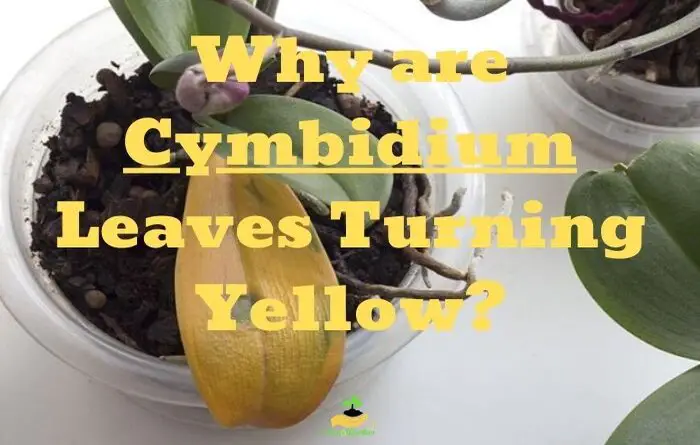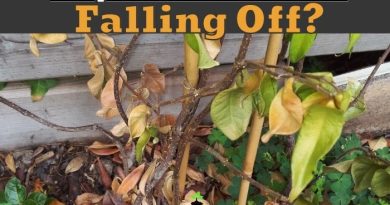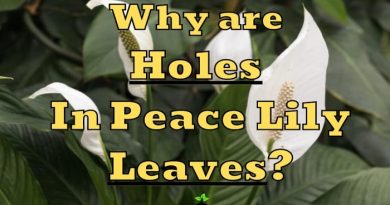Why are Cymbidium Leaves Turning Yellow?
The cymbidium orchid is a beautiful indoor flower. Today we are talking about one of the most common problems with the Cymbidium orchid: the leaves are turning yellow.
Read this article where we tell you why your Cymbidium orchid has yellow leaves and what to do in these cases .
The main reasons why Cymbidium leaves turn yellow are the following: waterlogging, sunburn, lack of nutrients, fungal disease, and pest infestation.
| Why are Cymbidium Leaves Turning Yellow: |
|---|
| 1. Waterlogging |
| 2. Sunburn |
| 3. Lack of nutrients |
| 4. Fungal or Bacterial disease |
| 5. Pests |
1. Waterlogging
Water stagnation, due to too close watering, causes root asphyxia which leads the Cymbidium to have yellow leaves. Cymbidium orchids are epiphytes, which means they grow without soil in the wild, instead, they attach themselves to a tree.
The water retained by the substrate is absorbed by the orchid velamen (white spongy membrane that covers the roots of the Cymbidium) which remains constantly wet .
By remaining saturated with water, the velamen is no longer able to absorb the oxygen that the roots need to carry out their metabolic processes, limiting Cymbidium growth, absorption and synthesis of some nutrients.
Furthermore, if the soil remains wet for too long, there is a serious risk of fungal diseases, such as root rot, which leads to rapid root decline.
I want to clarify that the frequency of watering depends on many factors. Including the type of soil used and the size of the grow pot.
The finer the substrate, the greater the water retention. And therefore it should be wet less often than a coarse and draining one.
The bigger the pot is, the more water it can hold, especially in width. The waterings will be more spaced than with a narrow pot.
How to Treat Yellow Leaves due to Waterlogging
Let the soil dry well, then resume wetting more sparingly.
The watering of the Cymbidium orchid varies a lot throughout the year, depending on the season and stage of development the plant is in.
It must be remembered that a fresh substrate in a flowerpot does not hold moisture well. To control the water level, a wooden stick is placed in the center.
Before watering, remove the wooden stick and inspect the tip. When it is dry, you can add more water. If the substrate sticks to the stick, wait a couple more days.
If during the summer the soil must never dry out completely, with the arrival of autumn it is necessary to gradually reduce the watering until they stop (or almost) during the vegetative rest that precedes flowering.
During flowering, watering is resumed, leaving the substrate to almost completely dry.
2. Sunburn
Cymbidium orchids need a lot of light, but not direct light. If you expose your Cymbidium to the sun for a long time, it will cause sunburns, damaging the leaves, turning them yellow. These spots will gradually expand and eventually the leaf will turn completely yellow and fall off.
We have just said that it is normal for Cymbidium leaves to be discolored and yellowish. That said, there are circumstances where the light is so strong that it can make the leaves turn pale by making them yellow or even white.
The huge amount of sunlight is so strong that the plant is unable to fully exploit it. Unused light energy is converted into heat, which over a certain threshold causes the collapse of chloroplasts, bleaching and burns on the leaves .
Cymbidium should be kept in a bright place: on a window, loggia, balcony. The flowerpot is placed on the south, east and west side. This orchid species usually has enough active morning light.
In summer, a white cloth or sheet of paper can be used to shade an orchid from the direct rays of the sun.
Keep the orchid where it receives adequate light, but keep in mind that excess sun damages the leaves, turning them yellow.
How to Treat Yellow Leaves due to Sunburn
Move the orchid to a slightly more sheltered location so it doesn’t get hit by direct sun during the central hours of the day.
If the Cymbidium has remained indoors in the shade, when you move it outside you need to gradually adapt it to bright light. Until it is left in direct sun for a week or two.
In summer, the Cymbidium must be shaded from the direct rays of the sun with a sheet of paper or a white cloth. If it is constantly in the sun, yellow spots form, which gradually expand.
3. Lack of nutrients
The lack of some nutrients during the growing season (especially nitrogen and sulfur) causes yellowing of the leaves in the Cymbidium.
Since in this phase the Cymbidium orchid grows a lot and stores large quantities of nutrients inside the pseudobulbs, it must be fertilized abundantly. Peaking in the hot summer months.
If this is not done, sooner or later the plant will start to have a nitrogen deficit, growth will slow down and the leaves will begin to turn yellow, starting with the older ones.
Cymbidiums need organic matter to support their rapid growth. Growing in pots requires a few inputs of fertilizer to feed the soil, which naturally tends to become impoverished.
How to Treat Yellow Leaves due to Lack of Nutrients
If the leaves of the Cymbidium are turning yellow due to nitrogen deficiency, it is necessary to fertilize with a mineral fertilizer directly absorbable by the plant.
For example a granular 20-20-20 or calcium nitrate. Even better if alternated with one another.
Occasionally it is also good to add magnesium sulfate (Epsom salts), as magnesium is lacking in these two fertilizers.
4. Fungal or bacterial disease
Another reason why Cymbidium leaves appear yellow is the presence of fungal or bacterial infections on the leaves. They usually cause circular yellow spots with a more or less defined outline, which turn brown as they advance. The border, in which the infection is active, usually remains yellow.
Other times the yellowing begins at the edges of the leaves and spreads towards the center as the disease progresses.
Fungal diseases proliferate in cool, humid environments with little air circulation. The bacterial ones, on the other hand, develop mainly in hot and humid climates.
They can be distinguished from each other by the typical watery appearance that characterizes bacterial infections compared to fungal infections. Often accompanied by an unpleasant odor.
It is important to distinguish the fungal problem from the bacterial one because it must be treated differently.
Fusarium root rot
A clear sign of Fusarium root rot is yellowish leaves with twisted edges. Over time, the entire flower acquires a gray tint. And, ultimately, everything ends with the rotting of the trunk and the death of the Cymbidium orchid.
To save Cymbidium from Fusarium rot, it is necessary to carefully cut off the damaged areas, and apply fungicide solution three times a day for ten days.
How to Treat Fungal or Bacterial infection
Remove the infected plant from the others, to prevent the problem from spreading to other specimens.
Depending on the type of infection, the plant must be treated with specific products:
- In the case of fungal disease, the plant must be treated with a systemic or cupric fungicide.
- If it is bacterial, you can try spraying hydrogen peroxide on the leaves or using a specific antibiotic.
When the foliage of the Cymbidium orchid is voluminous enough, the infection can be contained by cutting off the diseased leaves in whole or in part.
In this case it is necessary to use sterilized scissors and make the cut where the leaf tissues are still green and healthy.
5. Pests
Most commercialized Cymbidiums have thick, leathery leaves, making them quite hardy against many insects.
That said, there are pests that attack the Cymbidium orchid and that can be the cause of the yellow leaves. Cymbidium orchids are very susceptible to pests. In indoor culture, thrips, spider mites as well as mealybugs can be found.
Among these, particular attention must be paid to the red spider mites , which thrive very quickly in summer when the climate is hot and dry.
Such a pest as a tick infects the root system and trunk of plants. Because of this defeat, the orchid simply cannot receive nutrients and water from the soil in the normal mode.
The leaves of the flower slowly turn yellow, dry out and fall off. To combat parasites, you need to use targeted solutions and strictly follow the instructions in the instructions. Upon completion of the course of medical procedures, Cymbidium must be transplanted into fresh soil.
Except for soil parasites (nematodes and larvae) the other insects are phytophagous parasites, which feed on the plants sap after piercing the cell walls with their sucking apparatus.
In addition to making the leaves yellow (discolored) and stained, these pest insects greatly weaken the immune system of the plant, slow down growth and if not eradicated, they lead Cymbidium to death.
How to Prevent Cymbidium Leaves from Turning Yellow
- Cymbidiums need frequent fertilization To ensure that your orchid receives adequate nutrients, you should use a specific liquid fertilizer for orchids.
- A specific liquid fertilizer for orchids should be added to the water for irrigation every 15 days, from March to September every 15 days and October to February once a month.
- During the growth of new Cymbidiums pseudobulbs, water abundantly; after flowering, reduce watering to once every two weeks.
- Use a container of lukewarm water when watering orchids by immersion; place some kind of mesh above the substrate so that pieces of bark do not float away from the plant itself.
- To allow your orchid to bloom again, place it outside in May, in a place sheltered from the wind and partially shaded. Bring it indoors at the beginning of autumn: the cooler nights of late summer will stimulate its flowering. Be careful, however, because the Cymbidium does not support frost.
- Leaves must be wiped and dusted regularly. The leaves of the orchid are long and dust often accumulates on them.
- In case your plant suffers from a pest or disease , try to remove the affected leaves and roots and transplant it. Treat it with anti-plague products or special fungi for plants.
Frequently Asked Questions
These care mistakes cause yellow leaves: waterlogging due to frequent watering; dry heating air in winter; sunburn in summer; an infestation with pests, such as aphids, thrips, scale insects.
Experts advise that you do not cut off the yellow leaves, as this allows bacteria and fungi to enter the orchid. Only when your orchid is weakened or recovering from a serious illness may it be advisable to remove the leaf.
Place the orchid in a bright location but not in the scorching midday sun. In autumn, anticipate the next flowering by adding a special flowering fertilizer for orchids to the watering water every other time. Stop when the first flowers open.




